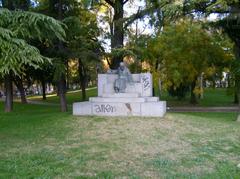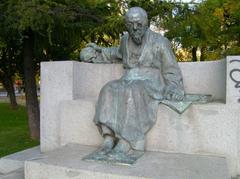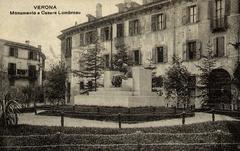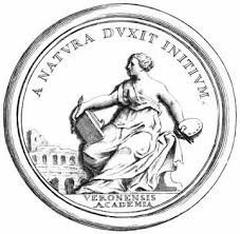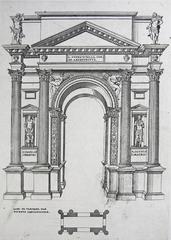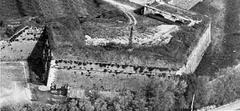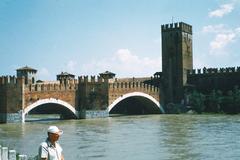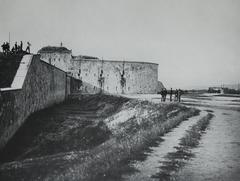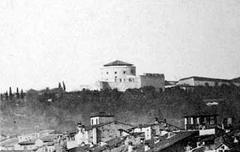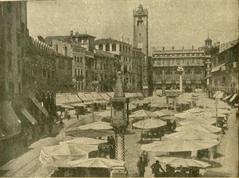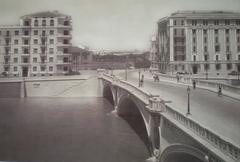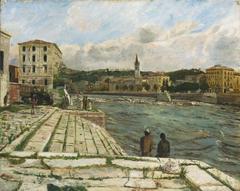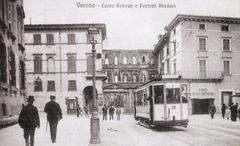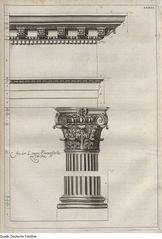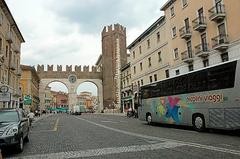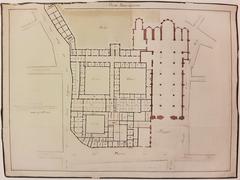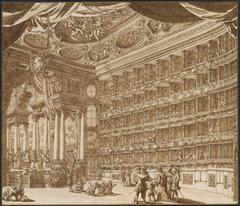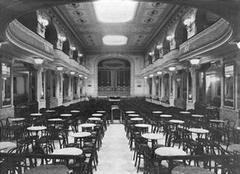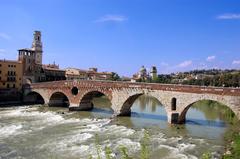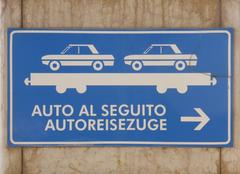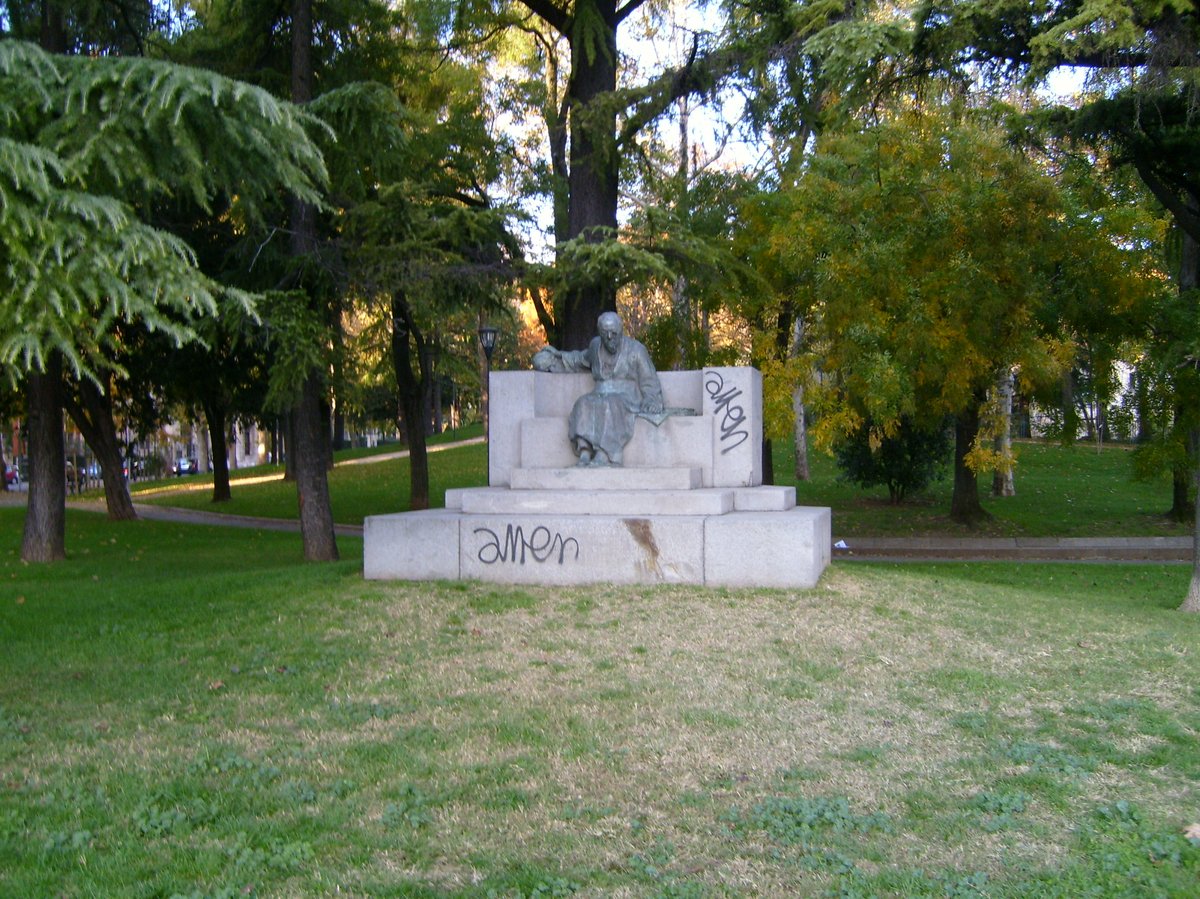
Visiting the Monument to Cesare Lombroso in Verona, Italy: Tickets, Hours, and Tips
Date: 14/06/2025
Introduction
Nestled in the tranquil Parco Cesare Lombroso in Verona, Italy, the Monument to Cesare Lombroso stands as both a remarkable piece of public art and a site for thoughtful reflection on the legacy of one of criminology’s most influential—and controversial—figures. Lombroso, born in Verona in 1835, is often referred to as the father of modern criminology. His theories, though groundbreaking in their era, have since faced significant criticism for their scientific determinism and ethical shortcomings. The monument, inaugurated in 1921 and sculpted by Leonardo Bistolfi, portrays Lombroso in a contemplative pose, symbolizing his dedication to scientific inquiry. Located along Viale Gabriele D’Annunzio, just a short stroll from Verona’s historic center, the monument is easily accessible and close to other notable attractions such as the Church of San Giorgio and the Verona Arena. This guide provides comprehensive information on visiting hours, admission, accessibility, travel tips, the monument’s artistic features, and the ongoing ethical debates surrounding Lombroso’s legacy. For further details and virtual resources, consult the official Verona tourism website (visitverona.it).
Table of Contents
- Introduction
- Lombroso: Historical Context and Controversy
- The Monument: Artistic and Symbolic Features
- Visiting Hours, Admission, and Accessibility
- How to Reach the Monument
- Nearby Attractions and Amenities
- Visitor Experience and Atmosphere
- Ethical Considerations for Visitors
- Practical Visitor Information
- Frequently Asked Questions (FAQ)
- Summary and Travel Tips
- Call to Action
- References and Further Reading
Lombroso: Historical Context and Controversy
Cesare Lombroso (1835–1909) was an Italian physician, psychiatrist, and criminologist whose work laid the foundation for criminal anthropology. He introduced the concept of the “born criminal,” advocating biological explanations for criminal behavior—a theory that has been widely discredited and critiqued for its association with scientific racism and determinism. Despite these criticisms, Lombroso’s influence on the development of forensic science remains significant (Crimpsy, Atlas Obscura).
The monument in Verona reflects both the esteem in which Lombroso was once held and the complex reassessment of his legacy in contemporary times. After its inauguration in 1921, the statue was removed during the Fascist era and later restored in 1948, mirroring shifting attitudes toward Lombroso’s work (OpenEdition Journals).
The Monument: Artistic and Symbolic Features
Artistic Details
- Medium and Materials: The statue is cast in bronze, a traditional medium for Italian public monuments, valued for its durability and ability to capture fine detail (Alamy).
- Composition and Pose: Lombroso is depicted seated, in formal 19th-century attire, holding a book and a skull—symbols of his scientific pursuits and authorship, especially his seminal work “L’Uomo Delinquente.”
- Scale and Proportions: Slightly larger than life, the statue invites connection without overwhelming viewers.
- Pedestal and Inscriptions: The bronze figure rests on a stone pedestal bearing Lombroso’s name, dates, and a brief summary of his contributions. Additional plaques provide further context (Visit Verona).
- Setting: Surrounded by the greenery of Giardini Cesare Lombroso, the monument is a peaceful focal point for reflection.
Symbolic Elements
- The monument eschews dramatic allegory in favor of a realistic portrayal, emphasizing Lombroso’s scholarly identity.
- The inclusion of scholarly tools (book, skull) underscores his commitment to scientific inquiry while avoiding punitive imagery, reflecting Italian commemorative traditions.
Visiting Hours, Admission, and Accessibility
- Location: Giardini Cesare Lombroso, Viale Gabriele D’Annunzio, Verona, Italy (View on Map)
- Visiting Hours: The monument is accessible daily from early morning until dusk (approximately 8:00 AM to 8:00 PM, but may vary seasonally—check visitverona.it for updates).
- Admission: Free and open to all; no ticket is required.
- Accessibility: The park is wheelchair accessible, with paved paths and benches. Some uneven surfaces may exist, but the main approach is suitable for visitors with limited mobility.
How to Reach the Monument
- On Foot: A 15–20 minute walk from Verona’s historic center, following scenic routes along the Adige River.
- By Public Transport: Bus lines 11 and 12 stop near Viale Gabriele D’Annunzio. Tickets cost about €1.50 (Evendo).
- By Car: Limited parking is available nearby; public transport or walking is recommended due to restricted traffic zones.
Nearby Attractions and Amenities
- Church of San Giorgio: A historic church adjacent to the park.
- Porta San Giorgio: An ancient city gate marking the old city’s edge.
- Verona Arena: Renowned Roman amphitheater in the city center.
- Verona Cathedral (Duomo): A Romanesque masterpiece just across the river (Wandering Italy).
- Cafes and Shops: Available in the Borgo Trento neighborhood.
- Museo Lombroso in Turin: For those interested in Lombroso’s research collection (note: admission fee applies).
Visitor Experience and Atmosphere
Parco Cesare Lombroso is a favored spot for locals, providing a green refuge for jogging, reading, and family outings. The monument’s tranquil setting offers visitors a chance to reflect on Lombroso’s legacy amidst the everyday rhythms of Verona life (Evendo).
Ethical Considerations for Visitors
Human Remains and Consent
Lombroso’s research involved the collection and display of human remains, most notably the skull of Giuseppe Villella, which continues to be the subject of repatriation campaigns and ethical debate (Atlas Obscura). Visitors are encouraged to approach the monument with sensitivity to issues of consent and dignity.
Scientific Racism and Modern Impact
Lombroso’s theories, now debunked, contributed to harmful stigmatization and discriminatory policies. The monument stands as a prompt for critical engagement with the history and consequences of scientific racism (Atlas Obscura).
Regional and Political Sensitivities
The monument has also been a site of protest, especially from Southern Italian groups who suffered from Lombroso’s theories and their social consequences. Visitors should be aware of these complex legacies.
Museums and Ethical Display
The Museo di Antropologia Criminale in Turin now contextualizes Lombroso’s collections, highlighting scientific errors and ethical issues, and encourages a balanced, critical reflection (Atlas Obscura).
Practical Visitor Information
- Facilities: Benches, shaded areas, and paved paths.
- Safety: The park is generally safe; exercise caution after dark.
- Photography: Permitted, but please respect the site’s sensitive nature.
- Guided Tours: Occasionally available through local tour operators; check with the Verona tourist office.
Frequently Asked Questions (FAQ)
Q: What are the visiting hours of the Monument to Cesare Lombroso?
A: Open daily from early morning until dusk (typically 8:00 AM to 8:00 PM).
Q: Is there an admission fee?
A: No, visiting the monument and park is free of charge.
Q: Is the monument accessible for visitors with disabilities?
A: Yes, the park and statue area are generally accessible, with paved paths.
Q: Are guided tours available?
A: Some city tours include the monument; inquire at tourist offices or online.
Q: Can I take photographs?
A: Yes, but be respectful given the monument’s sensitive history.
Summary and Travel Tips
Visiting the Monument to Cesare Lombroso offers not only a glimpse into Italy’s intellectual and scientific history but also an opportunity for critical reflection on the evolving nature of scientific thought, ethics, and public memory. Set in a peaceful park, the monument is free to access and makes an excellent stop for travelers interested in history, criminology, and culture. Enhance your visit by exploring nearby historical sites such as the Church of San Giorgio and the Verona Arena, or by joining a guided tour for deeper insights. For up-to-date information, interactive maps, and audio guides, consider downloading the Audiala app and following Verona’s official tourism channels (Visit Verona).
Call to Action
Plan your visit to the Monument to Cesare Lombroso and experience Verona’s rich historical landscape. Download the Audiala app for audio tours and interactive maps, and connect with us on social media for the latest updates, travel tips, and cultural events in Verona.
Alt text: Monument to Cesare Lombroso in Verona, Italy, a bronze statue on a stone pedestal.
References
- Visiting the Cesare Lombroso Monument in Verona: History, Hours, and Tips, 2025, Visit Verona (visitverona.it)
- Visiting the Monument to Cesare Lombroso in Verona: Hours, Tickets, and Historical Significance, 2025, Visit Verona (visitverona.it)
- Monument to Cesare Lombroso Visiting Hours, Tickets & Verona Historical Sites Guide, 2025, Evendo (evendo.com)
- Monument to Cesare Lombroso in Verona: Visitor Guide, Historical Context, and Ethical Considerations, 2025, Atlas Obscura (atlasobscura.com)
- Monument to Cesare Lombroso in Verona: Visitor Guide, Historical Context, and Ethical Considerations, 2025, OpenEdition Journals (journals.openedition.org)
